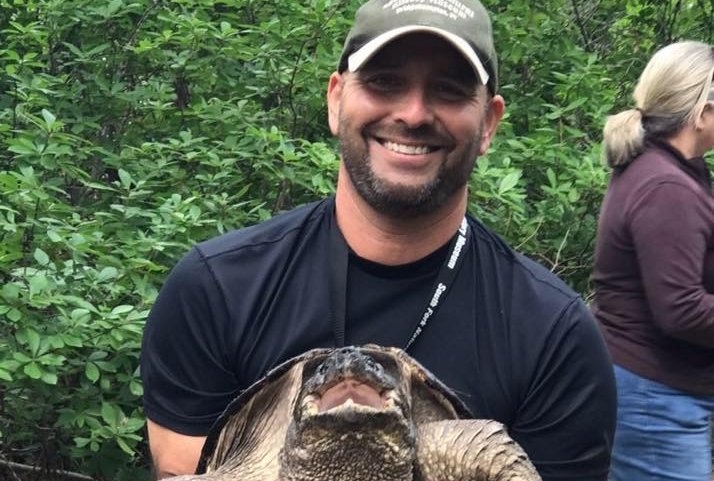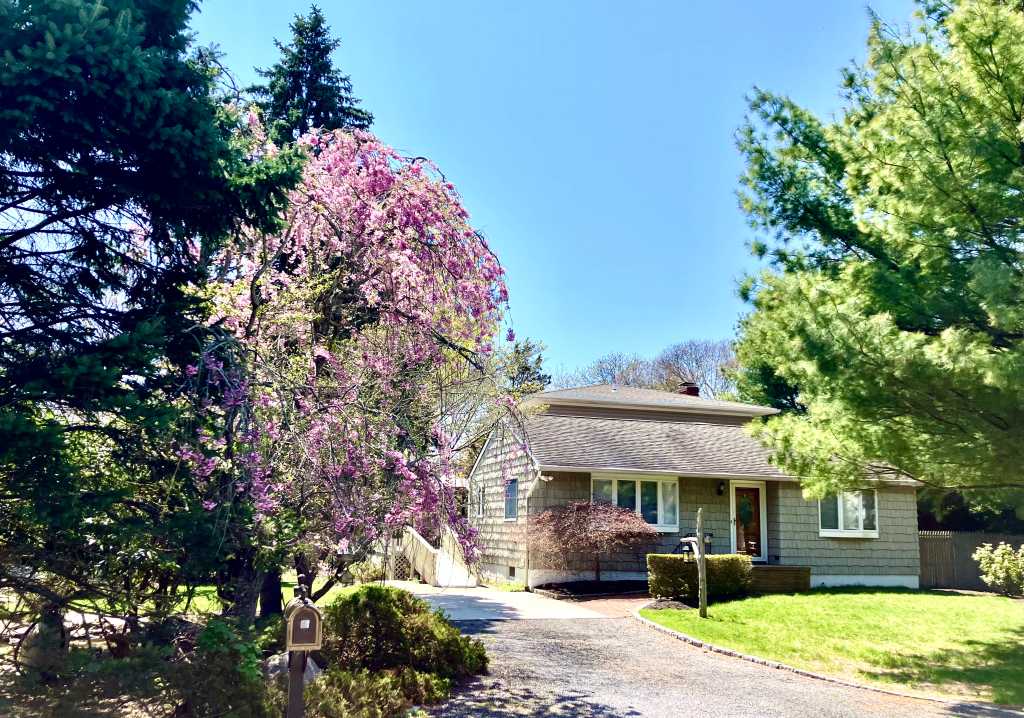Meet Frank Quevedo, Executive Director of SoFo

The South Fork Natural History Museum (SoFo) is a hidden gem that Executive Director Frank Quevedo hopes more people will discover this spring and summer. Situated adjacent to 1,100 acres of preserved land, it is a teaching museum that focuses strictly on native animals, fish and habitats.
“We have programs ideal for young children through the oldest adults,” says Quevedo, a marine biologist by profession who has been executive director since 2010. Prior to that, He was a Bay Management Specialist for the Town of East Hampton and led field tours for the Museum, which sits on 3 acres adjacent to the Long Pond Greenbelt Preserve. With more than nine miles of hiking trails, the Greenbelt stretches from glacial moraine highlands near Sag Harbor on the north to Sagaponack and the Atlantic Ocean on the south. The Greenbelt offers a rich biodiversity and many species of rare and endangered animals and plants. “We offer outdoor walks, unique programs and our building is fully accessible. Some of our trails are also accessible.”
The South Fork Natural History Museum and Nature Center was founded in 1988 by a group of South Fork naturalists as The Nature Clubhouse in Amagansett. The museum opened at its current location in May 2005.
The 6,400-square-foot museum includes scientifically accurate galleries featuring live and recreated natural habitat exhibits and floor-to-ceiling murals of forests, ponds and ocean landscapes. The popular marine touch tank holds sea stars, crabs, urchins and whelks. The museum includes aquariums and terrariums.
Staffers also offer programs at off-site facilities such as schools, libraries and senior centers. In addition, they have live animals such as reptiles, amphibians and fresh and saltwater fish, all of which can be brought offsite.
Quevedo is particularly proud of their efforts regarding sustainability.
“We’re confident that as we teach visitors about the importance of sustainability and the various habitats, they’ll be more inclined to want to follow sustainable practices and want to take care of the environment.
“The preserve includes wetlands, grasslands, forests and many different habitats for native wildlife,” says Quevedo, who explains that a good portion of the preserve land was purchased using a real estate transfer tax program known as the Community Preservation Fund (CPF) and Open Space Funds managed by the Town of Southampton for the protection of farmland, open space and community character. “You also can see bald eagles, red foxes, and a tremendous variety of birds and other animals. We also have a touch tank, a pollinator garden, bat boxes and osprey nests. The preserve is a perfect place to see and learn about nature on the South Fork of Long Island.”
Quevedo says that being able to teach classes is just one of the perks of his job.
“Teaching is one of my passions,” Quevedo says. “It is really rewarding to make a difference in the lives of those who come to the museum and visit the preserve.”
This is the 36th year of the museum and it will be celebrated with a fundraising gala on July 12.
The educators provide programs and guided walks into the preserve, but you also can grab a brochure and take off on your own. Trails are well marked and maintained. The museum has an eight-person staff. They also offer internships for college students and high schoolers.
“They must have an interest in or degree in the field,” says Quevedo, who adds that the staff offers about 250 programs per year. “We also have volunteer opportunities, our Marine Science Camp and Young Birders Club. We offer both day and nighttime programs, including night walks to understand our nocturnal world.”
The staff is taking part in two impressive scientific research initiatives. They are tracking the movements of the NYS Endangered Eastern tiger salamander using radio telemetry transmitters. They also have a shark science research program usingsatellites tags to track movements and behaviors of thresher, white, dusky, sand tiger and other sharks along the South Shore of Long Island. The staff at SoFo have been studying sharks since 2015 and were the first ones to satellite tag a juvenile white shark in the North Atlantic Ocean. Their research is shared with other researchers and scientists up and down the East Coast and throughout the world.
“We’re tracking which sharks are in the area, how they behave underwater when we can’t see them, and monitoring the sharks’ movement,” Quevedo explains. “Technology is allowing us to understand all the animals around us.”
Other groups include the SoFo Young Environmentalist Society and groups interested in native gardening and planting.
“We try to offer programs that pique the interest of youngsters,” Quevedo says. “We hope to focus their minds as they become the leaders of our next generation.”
SoFo is celebrating its 36th year with a gala at the museum. The “Champions of the Wild: A New Generation” will benefit the SoFo environmental and educational programs and initiatives. It will be 5:30-10 p.m. July 12. The special guest for the evening will be philanthropist Jean Shafiroff. Hosts are Erica Noble and Ray Iwanowski, Kim and Greg Lippmann, and Susan and David Rockefeller. The honorary chair is Liv Schreiber. Honorees include Iwanowski and Noble, Josh Fox and Jeff Corwin. The gala will be at the museum.
For more information, visit sofo.org or call 631-537-9735. Museum admission is $10 adults, $7 ages 3-12, free younger than 3. Programs are charged separately. Memberships start at $60 per individual and $100 per family, and include program fees. The museum is open daily from 10 a.m.-4 p.m. (except Easter, Thanksgiving, Christmas and New Year’s Day.). The preserve is open 365 days per year.
Todd Shapiro is an award-winning publicist and associate publisher of Dan’s Papers.



